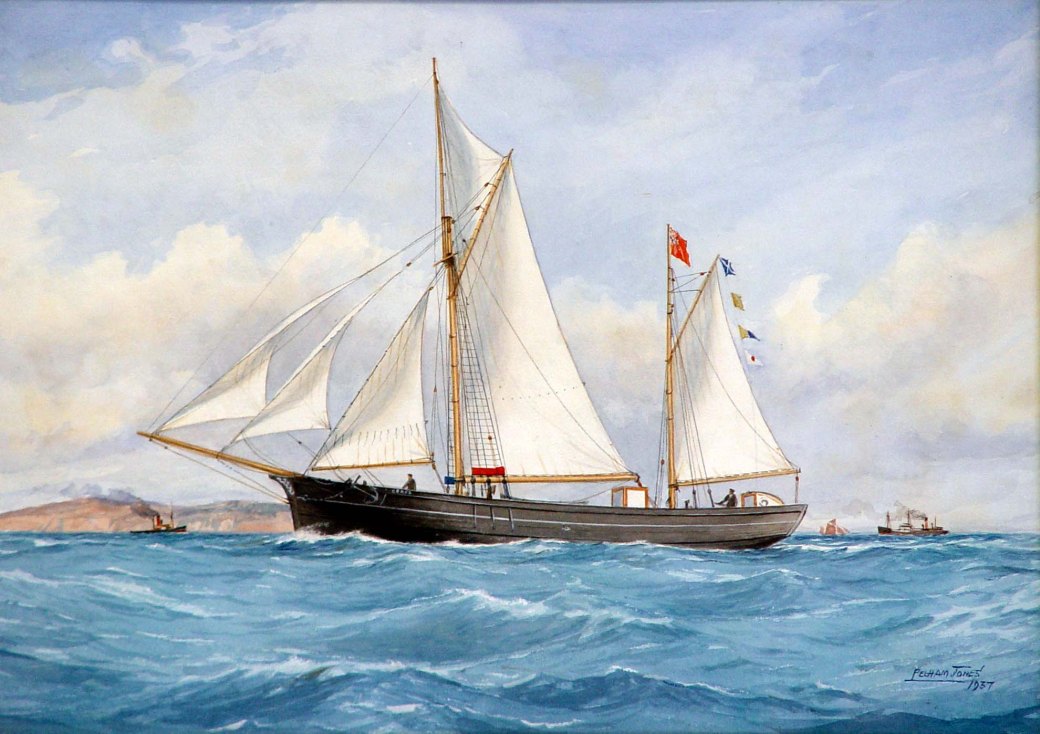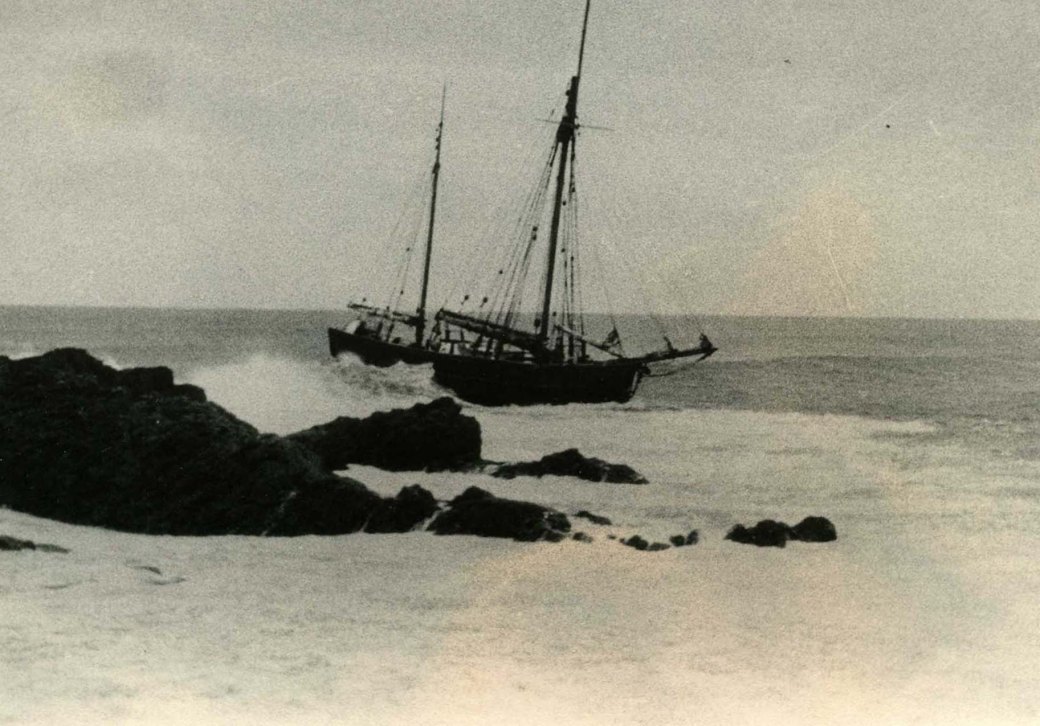Ceres
A Wonderful Record
The following information concerning the 117 years’-old ketch Ceres has been kindly given me by Captain W.W.Petherick, her owner, and he has consented to my using this in writing her history for Sea Breezes.
There seems to be no doubt that the Ceres is our oldest sailing vessel still in active service, and that, after 117 years of strenuous work she is still in perfect condition and good for many more years’ service, speaks equally well for her builder and owner.
Ceres was built in Salcombe in 1811, where she belonged until 1830, and while owned there several times crossed the Bay of Biscay to Spain for cargoes of fruit, nuts etc., and in these days was considered to be the fastest little vessel in the three channels. She was then smack-rigged and registered 34 tons, 54 tons burthen.
She first came to Bude, where she is now owned, in 1826 with a cargo of timber from Plymouth, and was first owned in Bude by a Captain Knowles, who in 1830 brought in and discharged twenty cargoes of coal from Wales. In 1842 Captain W Lewis purchased her and still traded to Bude.
Weathered out many storms
In 1852 she was purchased by Captain Petherick’s father and has been in the family ever since. In 1862 Captain W W Petherick took over command of the little vessel, and found that she wanted dry-docking for repairs. While in dry-dock Captain Petherick was persuaded to have her lengthened, which he did. Fifteen feet was put into her amidships and she was ketch-rigged. When completed, she registered 52 tons and carried 85 tons. Captain Petherick then took her in the general coasting trade. She carried many cargoes of barley for the whiskey distilleries in the Western Isles of Scotland and visited almost every port in Ireland from Londonderry south-about to Limerick in the west. From there it was generally oats to the English Channel ports, Channel Islands, London, Malden, Ipswich etc.
As to the sea-worthiness of the little vessel, I can do no better than quote Captain Petherick’s own words. He says, “I have weathered out many storms and hurricanes in her, and she was always all there; everyone who went in her considered her to be one of the best sea boats afloat.”
In 1884 Captain W.W.Petherick left the sea to take over his father’s business, and he was succeeded in the command of the Ceres by his brother, Captain R.W.Petherick, who is her skipper today, having been in her over 50 years.
On the 7th November 1900 she was caught in Bude Bay in a heavy nor’ west gale. A large Italian barque, the Congecionne, who was miles to windward of Ceres, went ashore close to Bude during the night. Ceres worked out of the Bay and ran for Padstow. She entered the harbour safely, but with an ebb tide and an eddy wind she had to let go both anchors when under the dangerous Stepper Point. She struck the rocks but the crew managed to jump ashore. At low water they were able to get aboard again, and that night she was towed to Padstow pier, where she was repaired.
In 1912 a bold step was taken by her owner, who had the vessel fitted with a semi-diesel engine, and this turned out a complete success. During the war, when Bude Bay we a hotbed of German submarines, and most of the coasters were penned in their harbours, Ceres, with the aid of this engine, was able to make regular trips to Bristol and the South Wales ports, and bring back cargoes of grain, flour, groceries etc. Her shallow draft allowed her to keep near to the rocks and sands, where the submarines could not submerge, and she was thus able to successfully evade them.
That Ceres is able to stand the test of time is evident from the fact that in the last five years she has carried over forty cargoes of slag and thirty of flour without damage.
She made the record number of passages for any ship between Bude and Port Talbot during October 1927.
They were as follows:
- Saturday Oct 8th – Arrive Bude, discharged and sailed for Port Talbot
- Sunday Oct 9th – Arrived Port Talbot
- Monday Oct 10th – Loaded slag and sailed for Bude
- Tuesday Oct 11th – Arrived Bude, discharged and sailed for Port Talbot
- Wednesday Oct 12th – Arrived Port Talbot, loaded slag and sailed for Bude
- Thursday Oct 13th – Arrived Bude, discharged and sailed for Cardiff
- Friday Oct 14th – Arrived Cardiff on evening tide, having had strong wind against her
- Saturday Oct 15th – Loaded flour and sailed for Bude
- Sunday Oct 16th – Arrived Bude, having made the passage from dock to dock in one tide
Bude Harbour is 18 miles south west of Hartland Point. There is water in for three hours on each spring tide, and those who know the difficulty of a small coaster rounding Hartland Point, with its strong race of tide, will appreciate the last-mentioned passage from Cardiff Dock to Bude in one tide.
I am sure all readers of Sea Breezes will join me in wishing Ceres a further long lease of active life.
- R.P.Hirst
- From Sea Breezes, the P.S.N.C Magazine
- No 111, starts Vol. XII, pp. 206-7, February 1929
- images added by BW
For earlier posts on the Ceres: On the “Ceres” 1811-1936


Very interesting